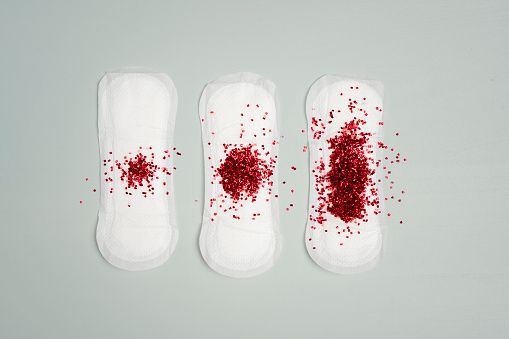Childbirth is an amazing experience, but it comes with many changes in a woman's body. Postpartum lochia is one of the changes that occur after childbirth, which Nigerian moms need to be aware of.
In this blog post, we will discuss everything you need to know about postpartum lochia, which includes its causes, symptoms, and preventive measures.
What is postpartum lochia?
Postpartum lochia is a natural vaginal discharge after a woman gives birth. This discharge contains blood, mucus, and uterine tissue that the body sheds as it heals after childbirth. It usually lasts for a few weeks, gradually becoming lighter in color and amount. However, it can vary from woman to woman, and sometimes heavy bleeding and clotting can occur.
During pregnancy, the lining of the uterus thickens to support the developing fetus. After childbirth, the uterus needs to shed this lining to return to its pre-pregnancy size and shape, which leads to the discharge of postpartum lochia.
Causes of postpartum lochia
Postpartum lochia is caused by the shedding of the uterine lining after childbirth. During pregnancy, the uterus undergoes significant changes to accommodate the growing fetus. The lining of the uterus thickens, the blood vessels within it enlarge, and the uterus expands in size.
After childbirth, the uterus must return to its pre-pregnancy state, which involves shedding the uterine lining necessary to support the pregnancy.
As the uterus contracts after childbirth, the thickened lining of the uterus and blood vessels are broken down and expelled through the vagina as a vaginal discharge called postpartum lochia.
The discharge is usually bright red for the first few days and then gradually changes to a brownish or pinkish color, becoming lighter in amount and eventually stopping.
Some factors that may increase the risk of heavy postpartum bleeding include:
- Prolonged or difficult labour.
- Multiple pregnancies.
- Previous caesarean sections.
- Placenta previa (the placenta implants low in the uterus) or other medical conditions that can affect blood clotting.
Symptoms of postpartum lochia
The symptoms of postpartum lochia can vary from woman to woman. Some common symptoms include:
- Heavy bleeding for the first few days after childbirth.
- Bleeding that becomes lighter in color and amount.
- Clots in the discharge.
- A foul odor from the discharge.
- Cramping or discomfort in the lower abdomen.
Preventive measures of postpartum lochia
There are several preventive measures that you can take to promote healthy healing and prevent complications related to postpartum lochia. Here are five measures that can help:
- Good hygiene practices: Maintaining good hygiene practices is crucial after childbirth, as it can help prevent infections and promote healing. Take showers rather than baths, and use clean towels and sanitary pads to absorb the postpartum lochia.
- Adequate rest and recovery: Getting plenty of rest and recovery after childbirth is essential to allow the body to heal correctly. Avoid strenuous physical activities, including heavy lifting, for at least six weeks after delivery. As a mom, you can also aim to get enough sleep and rest when the baby sleeps.
- Avoid sexual activity: Avoid sexual activity until the healthcare provider gives you the green light, usually at the six-week postpartum check-up. Engaging in sexual activity too soon after delivery can increase the risk of infection and delay healing.
- Follow your doctor's instructions: It is essential to follow the healthcare provider's instructions on how to care for yourself after childbirth. Always attend all postpartum check-ups and follow up on any concerns or unusual symptoms, such as heavy bleeding, persistent pain, or fever.
- Healthy diet and hydration: A healthy diet and hydration are important for healing and maintaining good health after childbirth. Eat a well-balanced diet rich in nutrients, including fruits and vegetables, lean protein, and whole grains. As a mom, you can also aim to drink plenty of fluids, such as water and other healthy beverages, to stay hydrated.
These preventive measures will help promote healthy healing and prevent complications related to postpartum lochia.
Conclusion
Postpartum lochia is a normal part of the healing process after childbirth. The amount and duration of postpartum lochia can vary from woman to woman, depending on several factors, including the type of delivery, such as vaginal or cesarean section, the number of pregnancies, the health status of the mother and baby, and other individual factors.
It is important to note that postpartum lochia is a normal part of the healing process after childbirth, and it is not a cause for alarm unless there are signs of excessive bleeding or infection. It is essential to follow the instructions provided by your healthcare provider to manage and monitor your postpartum lochia, especially during the first few weeks after delivery, to prevent complications and promote proper healing.










Comments